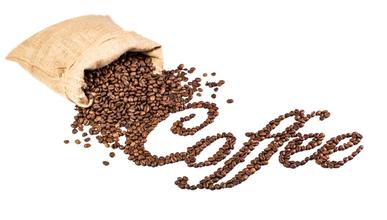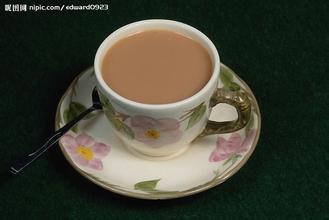Which is better for coffee beans with large grains and small grains?
Which is better for coffee beans with large grains and small grains?
a. China: Yunnan coffee-very cost-effective (recommended: Yunnan small grain coffee)
b. Mexico: Aldura Coffee-with wine aroma (recommended: Aldura Coffee)
c. Brazil: Brazilian Bourbon Santos Coffee-good quality and popular taste (recommended: bourbon Santos Coffee)
d. Tanzania: Kilimanjaro Coffee-full-bodied, less acidic than Kenyan Coffee (recommended: Kilimanjaro)
e. Honduras: selected Highland Coffee-suitable for mixed drinking (recommended: selected Highland Coffee)
f. Puerto Rico: Yaocote Coffee-less bitter (recommended: Yaocote Coffee)
g. India: plantation A Coffee-strong and smooth (recommended: grade A coffee)
h. Indonesia: Mandenin in Sumatra-strong in taste (recommended: manning coffee)
Also known as Liberian species, evergreen trees. The plant is tall, more than 10 meters high, the branches are thick and hard, grow obliquely upward, and the branches cork the fastest. The leaf blade is oval or round, the leathery leaf surface is glossy, the leaf end is closed, and the leaf margin is not corrugated. The fruit is large, oblong, the skin and pulp are hard and thick, the navel is large and protruding. The ratio of fresh fruit to dried bean is about 7: 10. The seed shell is thick, hard and tough, the seed coat is close to the seed kernel, the bean grain is large, and there are about 1300 beans per jin. The ripe fruit is scarlet. The branches bear less fruit, and the number of fruits per node is about 5-6. The main root of this species is deep, drought-resistant, wind-resistant, cold-resistant, light-resistant, and most susceptible to rust. The yield per plant is high and the yield per unit area is low. Strong flavor and strong irritation.
The main varieties are Esselsa (also called Charley), which was introduced from Guangxi to Hainan in the 1970s. The fruit is vigorous, but the seed coat is thick and hard like a small seed, the ratio of fresh to dry is 5: 8, and the quality is strong and slightly bitter. Deep roots, strong drought and cold tolerance, resistance to leaf rust and longicorn beetles
For the same kind of coffee, the bigger the bean, the higher the grade, the smaller the bean, the lower the grade, and the cheaper it is. Of course, there are differences in taste. The bigger the beans, the stronger the coffee. However, in addition to high-grade products, the classification of other coffee is not very strict, for example, the central grade beans can account for 60%. Then beans one level higher than this level and beans at a lower level will each account for 20% at the same time. Therefore, sometimes it is roasted according to the standard of the marked central grade, and the other 40% of the coffee cannot be roasted under the best conditions.
The taste of new coffee and old coffee baked in the same variety and degree will be significantly different, of course, new beans are more fragrant. Although the moisture of the new bean will be greatly lost and the color will turn white after several years of preservation, the flavor of the new bean will not be greatly affected.

Important Notice :
前街咖啡 FrontStreet Coffee has moved to new addredd:
FrontStreet Coffee Address: 315,Donghua East Road,GuangZhou
Tel:020 38364473
- Prev

Introduction to the treatment of coffee bean washing and sun-drying honey
Water washing and sun honey treatment of coffee beans honey treatment is a complex, time-consuming, difficult and easy processing method. The first step is to select high-quality fruit, and then peel off the pulp to leave the endocarp, where the endocarp is the core of honey treatment. The endocarp is rich in sugar and sour taste, which will slowly seep into the coffee beans during the drying process. Step two
- Next

Coffee beans at higher altitude the better-what are the changes in the flavor of coffee beans of the same variety at different elevations
Coffee beans the higher the altitude, the better-the changes in the flavor of coffee beans at different elevations of the same variety will directly affect the appearance of coffee beans. When you take a closer look at raw coffee beans, you will find that the size and density of each kind of coffee are different. Are the coffee beans in your hand small and dense? Is the gap in the middle of the bean tightly closed or open? Gap
Related
- Guji coffee producing area of Guji, Ethiopia: Humbela, Shakiso, Wulaga
- What is the most expensive variety of Qiloso in BOP multi-variety group?
- How to store the coffee beans bought home?
- Why are Yemeni coffee beans so rare now?
- Ethiopian Sidamo all Red Fruit Sun Sun Santa Vini Coffee beans
- SOE is mostly sour? What does it mean? Is it a single bean? what's the difference between it and Italian blending?
- Is Italian coffee beans suitable for making hand-brewed coffee?
- How to choose coffee beans when making cold coffee? What kind of coffee beans are suitable for making cold coffee?
- Just entered the pit to make coffee, what kind of coffee beans should be chosen?
- Can only Japan buy real Blue Mountain Coffee? What are authentic Jamaican Blue Mountain coffee beans?

